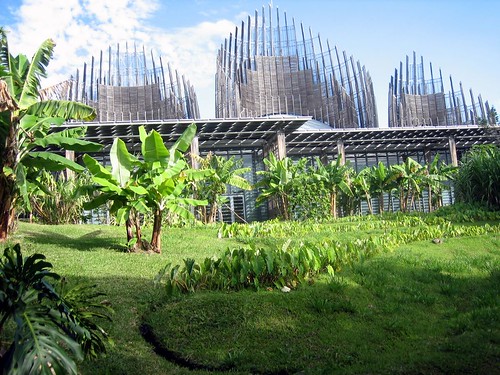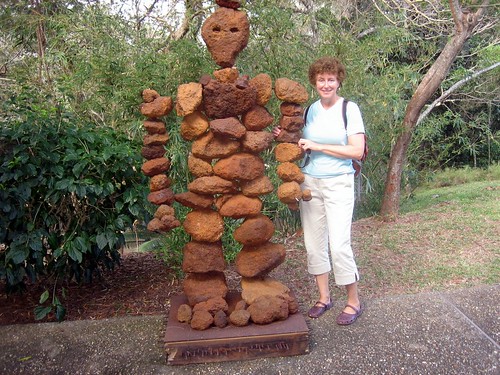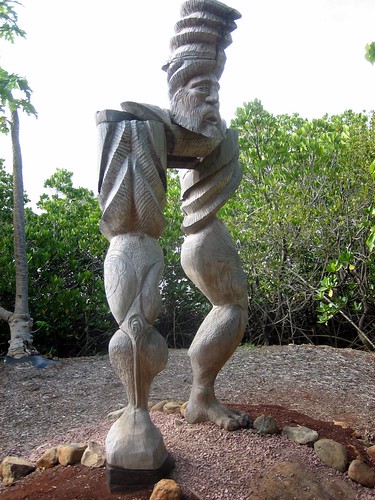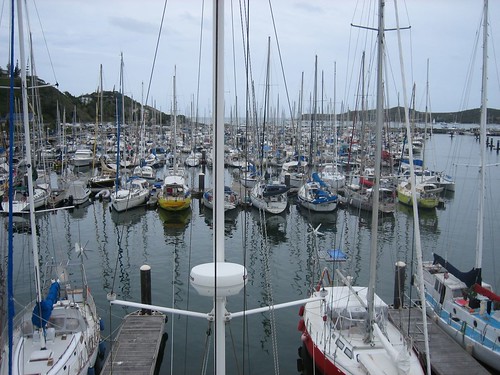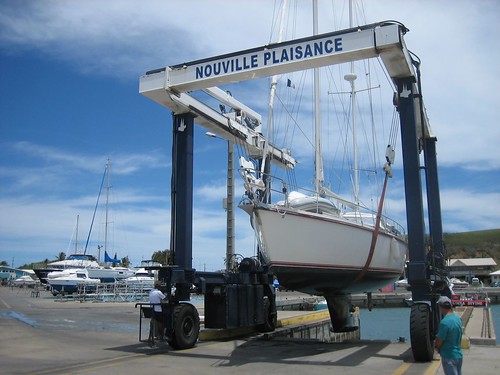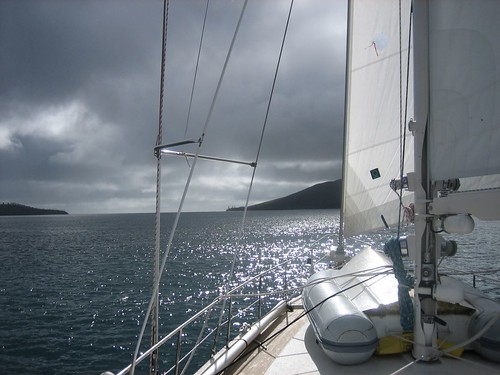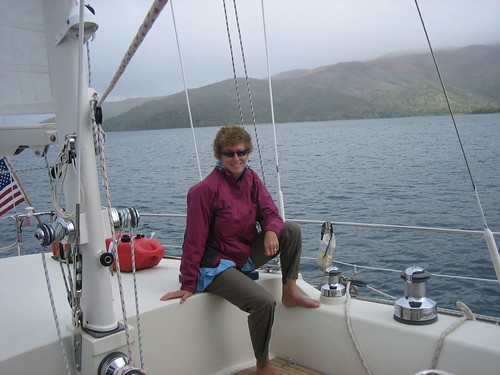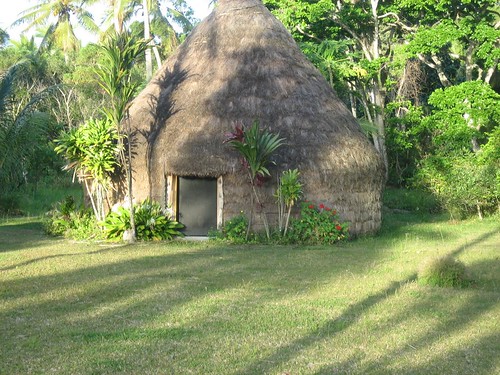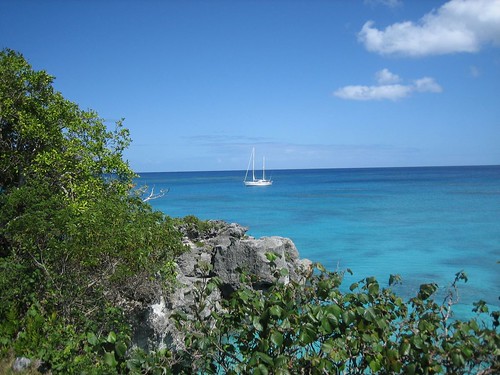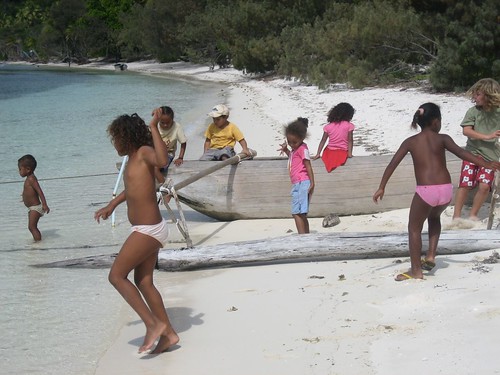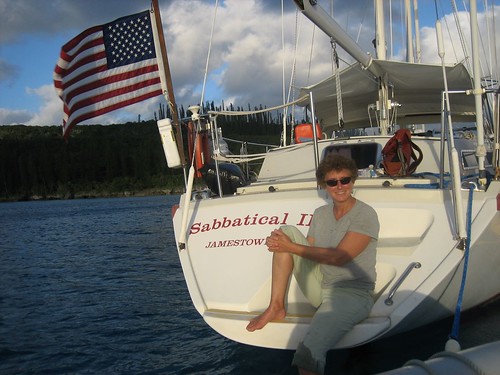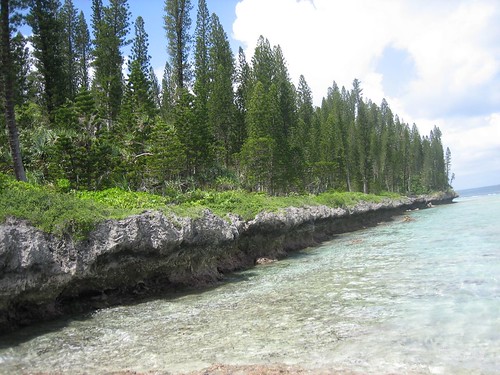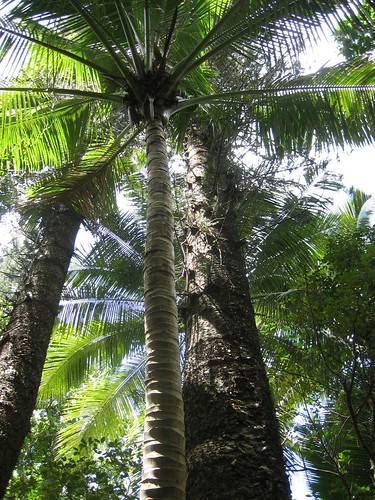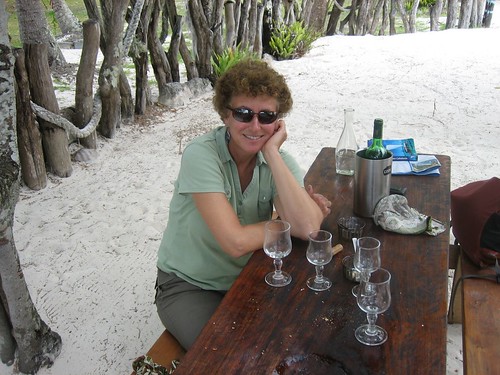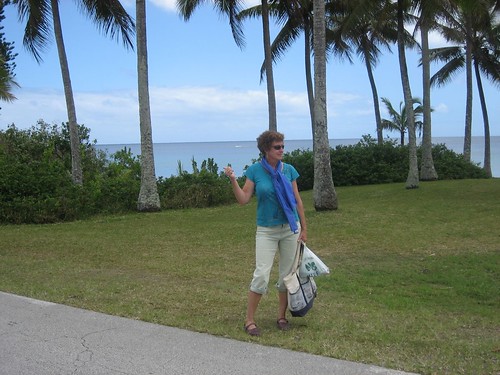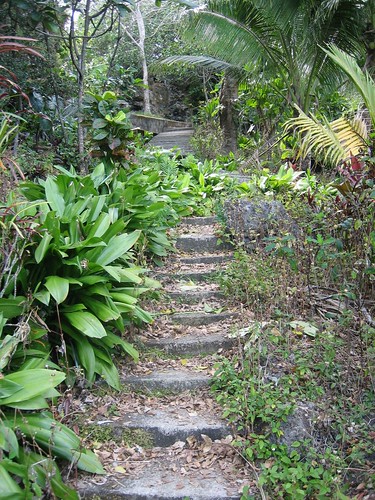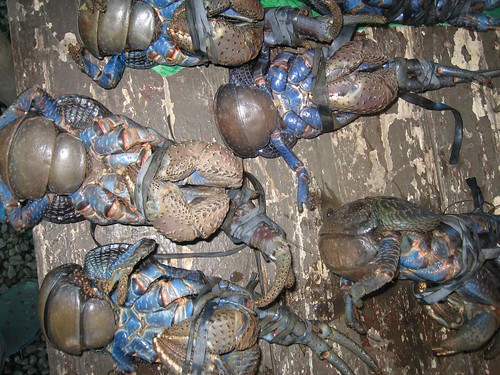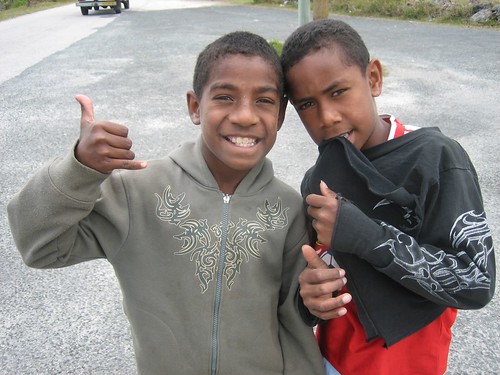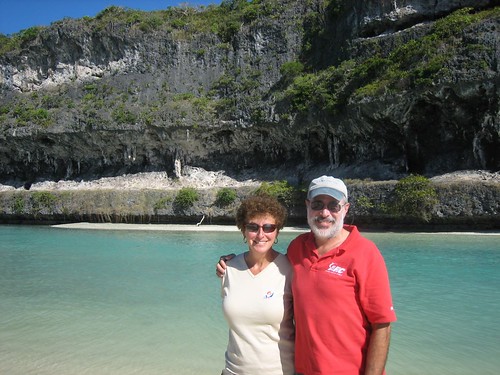October 13, 2008
Soon after we posted our last blog, we left Baie de Ouameo for Baie de Gadji in the northwest corner of Ile des Pines. Baie de Gadji is strewn with small islands and reefs that form a protected basin, almost like a lagoon, in a beautiful setting. The only problem is that Sabbatical III draws too much water to enter the basin. Instead, we inched our way along the southeast cost of Ile Moenoro until we had less than a meter of water under the keel, and dropped our anchor in a spot less than 500 meters from the basin. The spot we anchored in is not well protected from strong tradewinds, but is perfect for light winds, or winds from the north or west. The forecast called for winds clocking around to the north and then west, which they did, so it was a perfect place to spend four days.
The snorkeling was among the best of the season. As the winds fell to less than 5 knots and clocked around from the north, we were able to snorkel on the fringing reef where ordinarily large swells would break. We snorkeled over 100 meters of shallow coral alive with small fish to reach a drop-off with a wall of coral descending at least 30 meters into the sea. Along the drop-off we saw lots of larger fish including a blacktipped shark, sting ray, eagle ray, and big groupers and trevally, as well as a sea turtle.
In the shallow protected basin, we found only one vessel, Cool Change, one of the boats that was with us in the Port Vila to Ouvea rally. As a catamaran with retractable dagger boards, Cool Change needs only a meter of water depth. They reported that catching trevally (fish) was easy from the dinghy, and showed us one they had just caught, so Laura and I gave it a try. We had no success, although it was fun to try. I think my lures are all too large — they target large pelagic fish like tuna rather than the smaller species that live in lagoons. (Ciguatera is not a problem in this lagoon.)
After four days in Baie de Gadji the tradewinds came back in force, and our location became less advantageous. Moreover, the chop and swell made snorkeling difficult. So we headed back to Baie de Ouameo (5 miles away) in order to arrange a car rental (our first of the year) from the Hotel Kedjoe. Our first priority was to buy fresh fruit and vegetables from the market in Vao, which is held only on Wednesday and Saturday. We got our car at 8 am Saturday, the earliest time that it was available, and drove along the coastal road to Vao where we ran into our friends from the Dutch boat Joanne whom we had not seen since Samoa. We got to the market at 9 am at which time the fruit left for sale consisted of a single pamplemousse. The pamplemousse was still available because of the small worm hole on one side. We were desperate so we bought the pamplemousse (no discount for worms). The only veggies left in the market were unappetizing green tomatoes, not counting yams and sweet potatoes. We had brought a big backpack and some cloth bags that we intended to fill with fresh fruit and vegetables from the market, and all we got was a single wormy pamplemousse. At the grocery store in Kuto we found some New Zealand apples, and in the boulangerie we found some oranges from Mare. But local produce was not to be found.
After a coffee on the beach at Kuto, we drove to Baie d’Oro on the northeast coast. Our friend Sebastien from the boat “Rayam”, who shared the anchorage with us in Mare, told us about this fabulous restaurant on the beach — Restaurant Le Kougny. To get there, you park in the lot of the Hotel Medien, the only 5-star hotel on Ile des Pines, cross a tidal river to an island, and follow a footpath through the woods to the other side of the island. There, on the beach, is a small campground with some rough hewn tables set under the palms with a beautiful view towards a lagoon and reef. That is the Campground/ Restaurant Le Kougny. We had called the day before to order our meal, which is required. The choices are langouste (lobster), escargot (an Ile des Pines specialty), and fish. We had ordered the lobster, as did almost all the other dozen or so guests. It was an unforgettable meal. The lobster was large and sweet and we spent an hour finding meat in various lobster appendages. A full bottle of chilled white wine encouraged patience. The meal came with a small salad, rice, fruit salad (mostly canned!), and of course, lots of French bread.
After lunch, we strolled through the grounds of the Hotel Meridien and ran into Randy and Sherry of Procyon, whom we had not seen since Ambrym Island (Vanuatu). Randy had been hospitalized in Noumea after stepping on coral and getting a very bad infection. He seems to have made a complete recovery. We then drove to the Grotte de La Reine Hortense, a famous cave in the interior of the island. I guess we are not much enamored by caves even though this one is impressive. We also visited the grounds of the prison colony that took up nearly one-half of the island. After the uprising in Paris in 1870/71 (Commune de Paris), those involved were either executed or deported to a new prison colony at Ile des Pines. The French also sent rebellious Algerians and Kanaks from Grand Terre to the Ile des Pines prison colony. The prison finally closed in 1911 and the land returned to the local people. We visited the striking cemetery where the Paris Communards were buried in unmarked graves.
We are now back in Baie de Gadji. It is a day of squalls and rain so we are staying on the boat. We are hoping that it may clear up but a new weather forecast suggests we may have squalls for a few days. Well at least we have a bit of fruit to ward off scurvy.
M.
Posted by email from sabbatical3blog’s posterous
